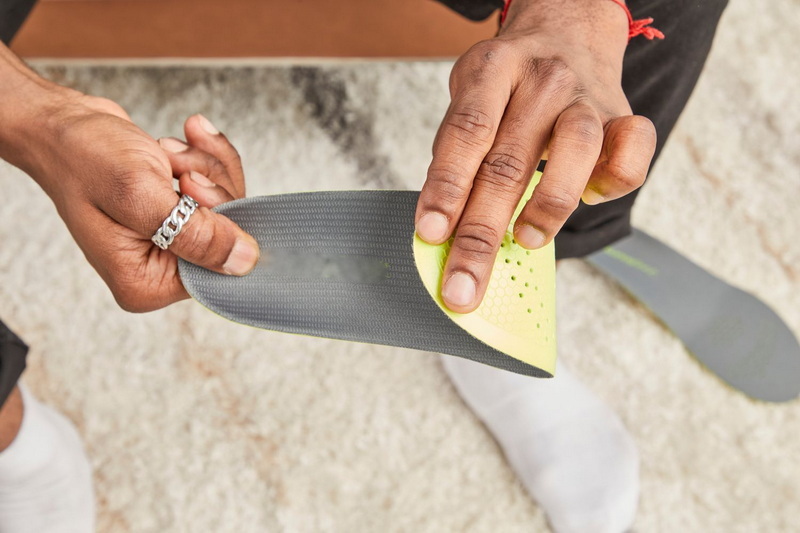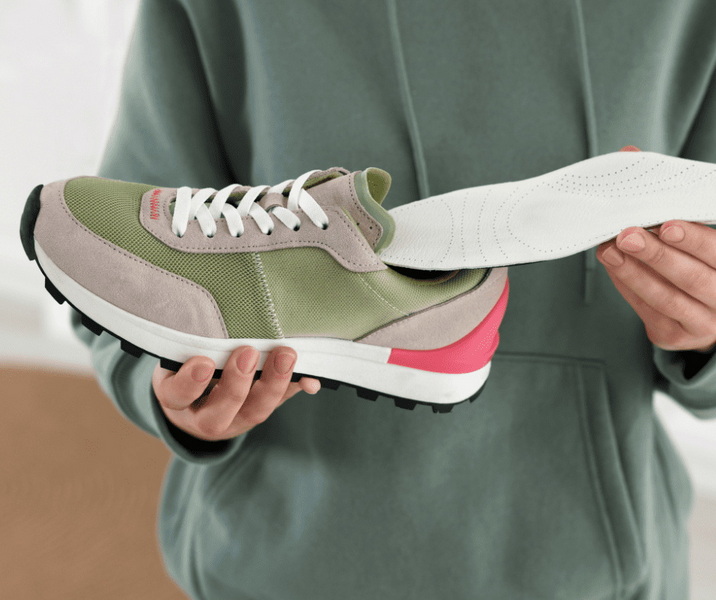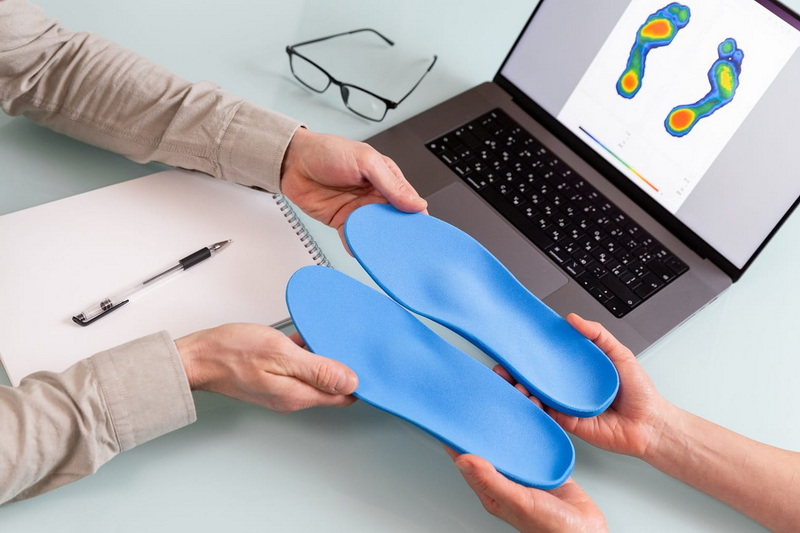Views: 222 Author: Edvo Publish Time: 2025-10-27 Origin: Site











Content Menu
● How Arch Inserts Influence Running Performance
>> Enhanced Stability and Balance
● When Running with Arch Inserts Might Not Help
● Selecting the Right Arch Inserts for Runners
>> Step 1: Identify Your Foot Arch
>> Step 2: Material and Construction
>> Step 3: Fit and Adjustability
● Custom Orthotics vs. Prefabricated Inserts
● The Role of Arch Inserts in Preventing Injuries
● Maintenance and Care for Arch Inserts
● Expert Insights: Biomechanics and Arch Support
● Transitioning to Running with Arch Inserts
● FAQs
>> 1. Do arch inserts improve running performance?
>> 2. Are custom inserts necessary for running?
>> 3. How can I tell if my inserts are worn out?
>> 4. Can arch inserts be used in all running shoes?
>> 5. Should I wear arch inserts during recovery days?
Running is one of the simplest and most effective forms of cardiovascular exercise, but it can also place significant stress on the feet and lower legs. Many runners wonder: Is it good to run with arch inserts? The answer depends on your foot structure, running habits, and personal comfort needs. Arch inserts—also known as insoles, orthotics, or arch supports—play a vital role in optimizing foot alignment, distributing pressure evenly, and preventing strain during impact-heavy activities like running.

Arch inserts are removable layers placed inside shoes to provide additional support to the foot arch. Their primary purpose is to maintain proper posture, improve balance, and reduce stress on muscles and joints. By stabilizing the arch area, they help absorb shock and prevent the uneven distribution of pressure during running.
They are commonly categorized into:
- Full-length inserts: Ideal for marathon runners or long-distance use, offering consistent comfort from heel to toe.
- 3/4-length inserts: More flexible and suited for short runs or lightweight shoes.
- Custom orthotics: Professionally designed inserts molded to match the exact contours of your feet.
Arch inserts not only enhance comfort but also aid in correcting motion abnormalities like overpronation and supination. This makes them immensely popular among both beginners and elite athletes.
Running involves repetitive motion, with each step generating impact forces that are several times your body weight. Without proper support, these shocks can accumulate over time, increasing the risk of injuries. Arch inserts can prevent or mitigate such problems by stabilizing foot mechanics.
Properly designed inserts help runners maintain natural motion control. By reducing inward or outward rolling of the foot, they allow for smoother strides and better rhythm.
Modern arch inserts made from advanced materials like EVA foam or gel cushion each step, dispersing impact energy and reducing pressure on ankles and knees. The result is less fatigue and more comfort during long-distance performances.
Running with appropriate inserts can prevent or reduce the occurrence of plantar fasciitis, shin splints, Achilles tendon pain, and knee discomfort. By keeping your feet correctly aligned, inserts help your entire kinetic chain—from feet up to hips—function in harmony.
With proper support, you lose less energy correcting each stride, which improves your running economy. Many runners find they can increase speed and endurance when their feet are properly supported.
While arch inserts can be beneficial for most runners, they are not a one-size-fits-all solution. Some individuals naturally possess strong, well-aligned feet that already provide sufficient support.
- Overuse may weaken intrinsic foot muscles over time.
- Cheap or poorly fitted inserts may cause blistering or imbalance.
- Incorrect materials can alter shoe fit, causing pressure points.
- Transitioning too quickly can lead to temporary discomfort.
If you experience new pain after switching to inserts, it may mean the shape or firmness isn't right for your foot type. Always allow a brief adaptation period of about one to two weeks.
You can determine your arch type using the “wet footprint test.” Wet your feet, step on a paper, and observe your footprint pattern:
- Flat Arch: The entire foot is almost visible. You may benefit from firm inserts that offer higher arch support.
- Normal Arch: The middle section is partially filled. Medium support inserts are ideal.
- High Arch: Only the heel and forefoot are visible. Look for soft inserts that absorb impact effectively.
Modern arch inserts come in a wide range of materials, each serving a specific purpose:
- EVA Foam: Light, breathable, and ideal for daily training sessions.
- Gel Inserts: Suitable for marathoners or heavy runners who need more shock absorption.
- TPU or PU Foam: Highly durable with excellent rebound performance.
- Custom Orthotics: Designed via 3D scanning for superior precision and comfort.
A correct fit is critical. Inserts that are too large can fold or bunch up, while smaller ones slide inside the shoe. Trim-to-fit models provide flexibility but must maintain the original curvature and structural support to remain effective.
1. Remove existing shoe liners if they interfere with insert placement.
2. Insert the arch insert, ensuring it sits evenly.
3. Walk first before running to gauge comfort and pressure distribution.
4. Start with short runs before increasing distance.
5. Clean regularly to prevent odor and bacterial buildup.

| Feature | Custom Orthotics | Prefabricated Inserts |
|---|---|---|
| Fit | Tailor-made for individual feet | Generic, standard sizes |
| Cost | Higher | Affordable |
| Usage | Specific conditions or athletes | General runners |
| Durability | 1–2 years | 6–12 months |
| Benefit Level | Maximum support and correction | Moderate support |
Custom orthotics are particularly beneficial for those diagnosed with persisting biomechanical issues. However, most recreational runners find high-quality prefabricated inserts effective and easier to obtain.
Arch inserts are pivotal for preventing common running injuries. Let's explore how they work against three major issues:
- Plantar Fasciitis: Inserts reduce tension on the plantar fascia, alleviating heel pain.
- Shin Splints: Proper arch support stabilizes lower leg motion and reduces muscle strain.
- Knee Pain: By aligning the foot and ankle, inserts minimize inward knee collapse during motion.
Athletes who combine inserts with stretching routines and strength training experience significantly fewer overuse injuries over time.
Keeping your inserts clean and well-maintained enhances their performance and hygiene.
- Wash inserts by hand with mild detergent; avoid soaking them in hot water.
- Let them air dry completely before reinserting.
- Don't tumble dry or expose to direct sunlight.
- Examine monthly for cracks or flattening of the arch.
- Replace when they lose resilience or show visible wear.
A fresh, supportive insert significantly improves both comfort and shoe lifespan.
Many runners across different experience levels report notable improvements after switching to arch inserts. Beginners experience a smoother transition into consistent jogging; professionals feel long-term relief from impact fatigue.
Podiatrists and sports therapists emphasize that arch inserts are not merely comfort accessories—they are tools for balance correction and injury management. When combined with proper footwear and running form, they enhance overall performance efficiency.
Biomechanical studies reveal that inserts optimize ground reaction force, allowing you to conserve energy during push-off. This leads to improved endurance, especially for marathoners or cross-country runners.
Adapting to new inserts should be gradual. Follow these steps for a smooth transition:
1. Begin with walking or short jogs of 10–15 minutes.
2. Observe how your calves and arches respond.
3. Gradually increase distance over 7–10 days.
4. If you feel soreness, take rest days to allow adjustment.
5. Continue using inserts during all athletic activities for consistency.
Proper adaptation ensures that your muscles adjust to the new alignment and that you avoid unnecessary strain.
So, is it good to run with arch inserts?
Yes—for most runners, it's a wise decision. Arch inserts provide essential support, improve foot alignment, and prevent repetitive stress injuries. They help absorb shock, enhance stability, and prolong your comfort on every mile. The secret lies in choosing quality inserts that match your foot type, using them properly, and maintaining them regularly.
Running with arch inserts can transform your experience, reduce fatigue, and build longevity into your athletic lifestyle. Whether you are a weekend jogger or a competitive runner, the right inserts can keep your steps strong, balanced, and pain-free.

Yes, they optimize body posture, reduce fatigue, and enhance stride consistency, all contributing to better overall performance.
Not always. Off-the-shelf inserts work well for most runners, but custom options are ideal for those with chronic pain or irregular arches.
If the material feels flat, thin, or uneven after pressing, or if pain returns, it's time for replacement.
Yes—most designs fit standard running shoes. However, ensure they don't alter the heel height or toe box flexibility.
Yes, consistent use helps retain good foot posture even on walking or rest days, supporting long-term recovery.